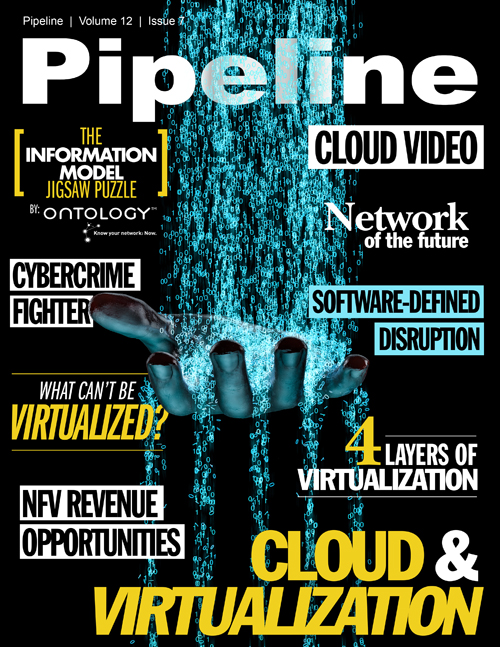The Four Layers of Virtualization
By: Dan Baker
 Necessity is the mother of virtualization and telecoms are desperate to monetize cloud and virtual services because Rome is burning.
Necessity is the mother of virtualization and telecoms are desperate to monetize cloud and virtual services because Rome is burning.Costly 3G, LTE and bandwidth roll outs have been great for users, but have not contributed big revenue gains. Traditional voice, SMS, and even new IP services are steadily being gobbled up by OTTs who can replicate and more cheaply deliver any “killer IP service” a telecom can dream up. And,
shared revenue and other partnerships with content providers have largely failed to deliver enough value to the bottom line. Folks, this is not a pretty picture.
But the good news is that services based on telecom cloud and virtualization technologies are on the way – and these are services that operators can definitely take to the bank. The cloud-enabled services available today include: cyber security, VPN/firewall services, content caching, and service assurance for enterprises – and this list will continue to grow.
The telecom cloud is a very different animal than plain-vanilla cloud computing services such as Amazon’s AWS. What’s different about in-line telecom clouds is they uniquely leverage an operator’s ability to analyze network data and take real-time action to: make a network change, pass info, or otherwise add value for the customer.
So in this article I’ll drill down on one such successful telecom cloud service in mobile security. Then, distilling conversations I had with several experts, I’ll zero in on advanced virtualization layers, such as NFV; lifecycle service orchestration/OSS; and BSS/policy systems that optimize network use and lead to a more commercially successful telco business.
I think of telecom virtualization in terms of four layers of functionality. Here they are, in ascending level of complexity:
- Telecom Services – These are the cloud services (mostly custom-built today) that leverage network data and are attractive because they make money, are easily deployed, are customer-sticky, and cannot be easily knocked off by OTTs.
- Function Virtualization & Orchestration – Delivers cloud services across an open orchestrated interface that gives us better cost savings, speed, and control over hardware choices, software changes, function vendors selected, and how software components are deployed and configured.
- Lifecycle Service Orchestration (LSO) – Provisions and assures services across diverse legacy networks, virtual functions, and network management (OSS) systems, especially in multi-vendor, multi-technology domains.
- Network Policy & Commercial Orchestration -- Maximizes revenue or profit from complex, diverse networks, allowing us to differentiate services based on customer value.
Telecom Cloud Services
The rise of cloud technology, neutral data centers, and cloud exchanges is exciting for it puts telecoms in the driver’s seat when it comes to any networked application that needs better QoS or a real-time response.
Telecom-delivered cloud services are just arriving and, once they take hold, we can expect them to steal big market share in many device software and enterprise appliance categories.A good example is Security as a Service for mobile operators, a service that protects phones from malware via analytics in the telecom cloud. Allot Communications, one of the pioneers in this area, has a telco customer today delivering this service to over 10 million subscribers. Some of the benefits they are receiving include:
- It’s a customer sticky service that protects phones from malware, email phishing attacks and includes parental/employer controls for web surfing.
- It makes money through a multi-tenant capability that scales to millions of users. It can deliver a very profitable service with subscriber take up in the 15% to 20% range.
- It’s superior to device-resident security software & appliances because it’s zero touch, always up-to-date, and easy to maintain in the telecom cloud.
- It’s OTT-proof because it’s delivered exclusively by the mobile operator.



















